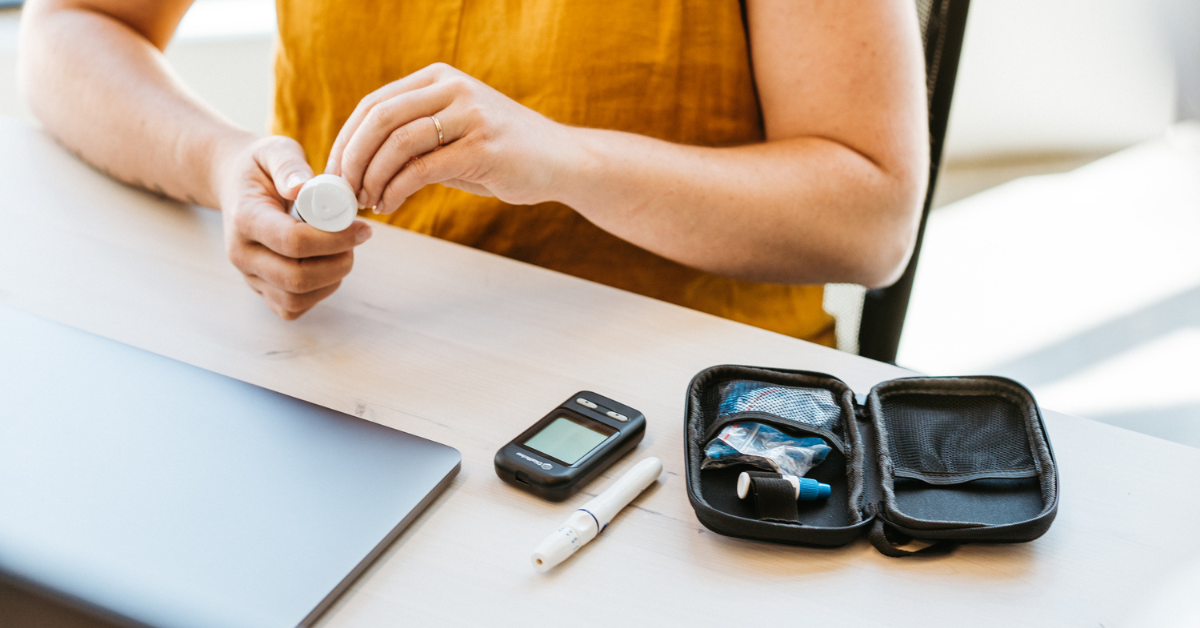
Being diagnosed with type 2 diabetes usually becomes all too real when you’re told to check your blood glucose levels—or as they say, “check your blood sugar.”
This is not something you would do otherwise. No one voluntarily pokes their finger, collects a drop of blood on a test strip for a device to analyze, then anxiously waits for a number to be displayed. Not in a million years.
And yet, here we are.
Like so many things, checking your glucose levels can also be a burden. It takes time and can disrupt daily routines. You can feel shy about checking while in front of other people. The results, when harshly interpreted, can become a source of frustration, judgment, and anxiety.
And yet, checking your glucose levels can be an amazing gift. It gives you a very direct, if limited, way of measuring your diabetes management at that moment. The number on the display gives you a fairly accurate read on your current blood glucose level.
The first thing to find out when you start monitoring your glucose levels is what you are looking for. Fundamentally you are checking to see if your glucose level is “in range.”
There’s a standard target range. It’s between 80 and 130 mg/dL (4.4 to 7.2 mmol/L) before meals and less than 180 mg/dL (10.0 mmol/L) two hours after meals. But that standard doesn’t always apply, especially when first diagnosed or when dealing with multiple health challenges at the same time.
Your target range can be different from the standard.
For example, sometimes when people are first diagnosed with type 2 diabetes their glucose levels are always elevated. As they work to bring their glucose levels down they can experience feelings similar to hypoglycemia—shakiness, confusion, extreme tiredness, etc.—even when their glucose level hasn’t gone below 70 mg/dL (3.9 mmol/L). In this situation it may be better to reduce glucose level targets in steps over time rather than aim for reaching the standard targets all at once.
Talk with your doctor about what your individualized glucose targets are for right now and how they might change over time.
Depending on what you’re focusing on, you can check your glucose levels at different times throughout the day.
Some of the most common times people check are:
When waking up (you might hear this referred to as a fasting blood sugar reading)
Before/after meals (you might hear about postprandial blood sugar reading, which generally refers to checking two hours after eating a meal)
Before taking insulin or other medications
Before/after exercise
At bedtime
There are several ways you can use your glucose readings to manage your diabetes care.
You can use your glucose readings for decision making. For instance, choosing what to eat in response to your fasting or before meal glucose level. And you can use your glucose reading to identify the type of exercise you want to do.
Checking (or testing) in pairs can help you better understand how a meal, type of exercise, or medication can affect your glucose levels. The way this works is that you check your glucose level before eating, exercising, or taking the medication and then again after.
Checking in pairs can also help you understand the effect of different kinds of exercise (aerobic, strength training, flexibility, etc.) on your glucose levels. While all exercise can yield health benefits, not all exercise will immediately bring your glucose levels down.
Talk with your doctor about when to check your glucose level and how to use your results to better manage your diabetes.
Over time as you measure your glucose levels you will gain insights from the numbers you see.
When you see a consistent result from, say, eating a particular meal or playing a sport, that insight can help you anticipate how to better manage your diabetes. If you know that your glucose levels drop after a certain point in a hike, for instance, you’ll know when to take a break, check your glucose level, and, if needed, drink the juice you brought along.
Also, over time, monitoring your glucose levels can help build confidence. You’ll have a more current read on how much your glucose levels are in range (or out of range) than you can get from a quarterly A1c. And, while you can’t always predict how your glucose levels will respond, you’ll become familiar with what tends to happen after certain events—like eating, exercising, or feeling stress.
With some knowledge and understanding checking your glucose level can become a tool for better managing your diabetes care and not just a daily inconvenience.